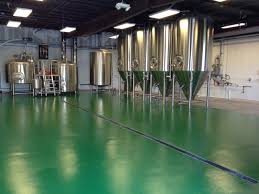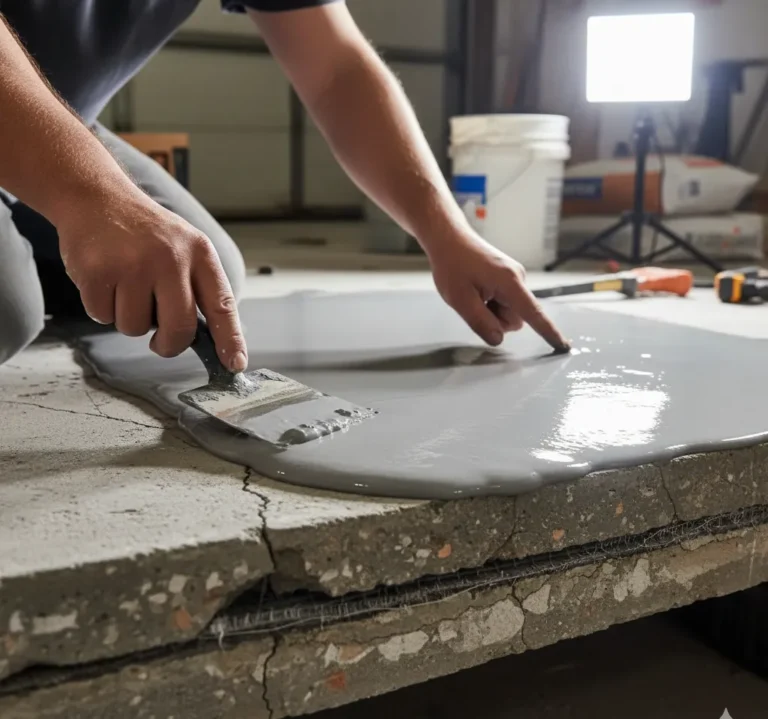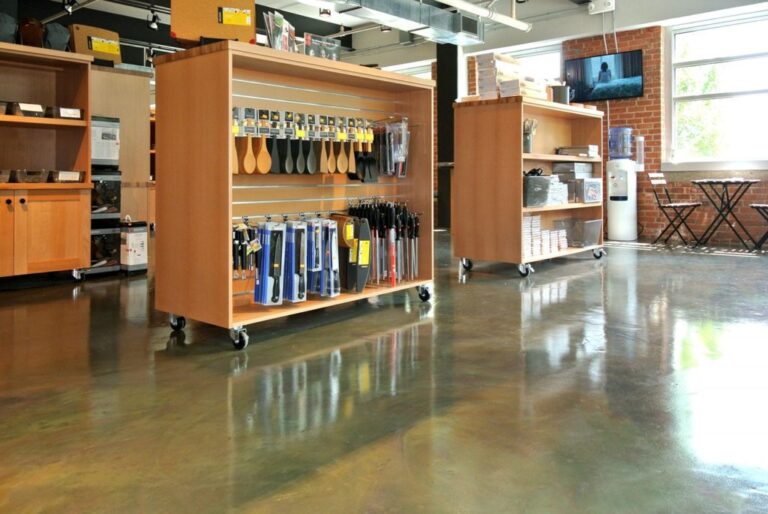Why Is Microcement Expensive?
Microcement has gained popularity in recent years as a versatile and stylish flooring option. However, many people are surprised by its cost compared to other materials. In this comprehensive guide, we’ll explore the factors that contribute to the expense of microcement and help you understand why it might be worth the investment.
Factors Influencing the Cost of Microcement
Several elements contribute to the overall cost of microcement installation. Understanding these factors can help you make an informed decision about whether this material is right for your project.
Quality of Microcement Material
The quality of the microcement material itself plays a significant role in its cost. High-quality microcement is made from carefully selected ingredients and undergoes rigorous testing to ensure durability and performance.
Premium microcement products often contain:
- Fine-grade cement
- Specialized polymers
- High-quality pigments
- Advanced additives for improved strength and flexibility
These superior ingredients result in a more expensive product, but they also contribute to better longevity and appearance.
Professionalism of Microcement Applicators
Applying microcement is a skilled job that requires expertise and experience. Professional applicators who specialize in microcement installation often charge higher rates due to their specialized knowledge and skills.
Factors affecting the cost of professional application include:
- Years of experience
- Specialized training
- Reputation and portfolio
- Attention to detail and craftsmanship
While it may be tempting to opt for a less expensive applicator, the quality of installation can significantly impact the final result and longevity of your microcement surface.
Condition of the Surface to be Coated
The state of the existing surface that will be coated with microcement can greatly influence the overall cost of the project. Surfaces that require extensive preparation or repair work will increase the total expense.
Common surface issues that may increase costs include:
- Uneven or damaged substrates
- Presence of moisture or dampness
- Old tiles or coatings that need removal
- Cracks or structural issues
Proper surface preparation is crucial for the success of a microcement application, and addressing these issues adds to the overall project cost.
Complexity of the Project
The intricacy of your microcement project can significantly impact its cost. Complex designs, patterns, or color combinations require more time, skill, and materials to execute properly.
Factors that can increase project complexity include:
- Multiple colors or color transitions
- Intricate patterns or textures
- Curved or irregular surfaces
- Incorporation of logos or custom designs
These design elements can create stunning results but also contribute to higher overall costs due to increased labor and material requirements.
Size of the Area
The total area to be covered with microcement is a straightforward factor in determining the cost. Larger areas require more materials and labor, leading to higher overall expenses.
However, it’s worth noting that the cost per square foot often decreases for larger projects due to economies of scale. This is because fixed costs, such as setup and equipment, are spread over a larger area.
| Project Size | Approximate Cost per Square Foot |
| Small (< 100 sq ft) | $15 – $25 |
| Medium (100-500 sq ft) | $12 – $20 |
| Large (> 500 sq ft) | $10 – $18 |
*Note: These figures are estimates and can vary based on location and specific project requirements.
Why is Microcement Expensive Compared to Other Materials?
To better understand the cost of microcement, it’s helpful to compare it with other popular flooring options.
Microcement vs. Tiling: Cost Comparison
Microcement is generally more expensive than traditional tiling, but it offers several advantages that may justify the higher cost.
Advantages of microcement over tiling:
- Seamless finish without grout lines
- Easier to clean and maintain
- Can be applied over existing tiles
- Customizable colors and textures
While the initial cost of microcement may be higher, its long-term benefits and unique aesthetic appeal make it an attractive option for many homeowners and designers.
Microcement vs. Concrete: Cost Comparison
Microcement is typically more expensive than standard concrete flooring, but it offers a more refined and customizable finish.
Benefits of microcement compared to concrete:
- Thinner application (2-3mm vs. several inches for concrete)
- Lighter weight, suitable for a wider range of structures
- More color and texture options
- Faster installation and curing time
The higher cost of microcement reflects its superior aesthetics and versatility compared to traditional concrete.
Microcement vs. Epoxy: Cost Comparison
Microcement and epoxy flooring are often in a similar price range, but microcement offers some distinct advantages.
Advantages of microcement over epoxy:
- More natural, matte finish
- Better slip resistance
- Easier to repair if damaged
- More environmentally friendly
While both options have their merits, the unique properties of microcement often justify its cost for those seeking a specific look or performance characteristics.
Additional Costs in Microcement Application
When budgeting for a microcement project, it’s important to consider additional costs beyond the basic material and labor expenses.
Preparation and Priming Costs
Proper surface preparation is crucial for a successful microcement application. This stage can involve significant costs, especially if extensive repairs or leveling are required.
Common preparation steps include:
- Cleaning and degreasing the surface
- Repairing cracks or damage
- Applying a primer or bonding agent
- Installing reinforcement mesh for added strength
These steps are essential for ensuring the longevity and quality of the microcement finish, but they do contribute to the overall project cost.
Sealing and Top Coats
To protect the microcement surface and enhance its durability, sealing and top coats are necessary. These additional layers add to the material costs and labor time.
Benefits of proper sealing include:
- Increased water resistance
- Enhanced stain protection
- Improved durability and longevity
- Easier maintenance and cleaning
While these protective layers increase the initial cost, they are crucial for maintaining the beauty and functionality of your microcement surface over time.
Environmental Considerations and Material Wastage
Microcement application requires careful planning to minimize waste and environmental impact. Factors such as material mixing, application techniques, and cleanup can affect both costs and environmental footprint.
Considerations for reducing waste and environmental impact:
- Accurate measurement and mixing of materials
- Efficient application techniques to minimize overspray
- Proper disposal of excess materials and packaging
- Use of low-VOC products for improved indoor air quality
While these considerations may slightly increase costs, they contribute to a more sustainable and responsible installation process. Microcement wall finishes Durable microcement surfaces are tough and long-lasting floor coatings that look smooth and modern
Dubai cultural spaces microcement is a special material used to make floors and walls look smooth in places where people learn about Dubai’s culture It helps create a modern look while still respecting the traditional feel of these important spaces Microcement tiles longevity Microcement tiles can last for many years if properly maintained and cared for They are durable and resistant to wear making them a long-lasting option for floors and walls
Microcement units transform boutiques by giving stores a sleek modern look These smooth surfaces create a stylish backdrop for displaying products Minimalist microcement walls create a smooth and sleek look in homes They are perfect for modern spaces that want a clean and simple style
Sleek microcement surfaces are smooth and modern-looking floors or walls They are made by applying thin layers of special cement to create a seamless and stylish finish
Is Microcement Worth the Investment?
Despite its higher cost, microcement offers several benefits that make it a worthwhile investment for many projects.
Durability and Longevity
Microcement is known for its exceptional durability and long lifespan when properly installed and maintained.
Key durability features:
- Resistance to cracks and chips
- High abrasion resistance
- Excellent adhesion to various substrates
- Ability to withstand heavy foot traffic
These characteristics contribute to a longer-lasting surface that can maintain its appearance for many years, potentially offsetting the higher initial cost.
Maintenance and Cleaning
One of the advantages of microcement is its ease of maintenance, which can lead to long-term cost savings.
Benefits of microcement maintenance:
- No grout lines to clean or reseal
- Resistant to stains and water damage
- Simple cleaning with mild soap and water
- No need for specialized cleaning products
The low maintenance requirements of microcement can result in significant time and cost savings over the life of the installation.
Aesthetic Appeal and Customization
Microcement offers unparalleled aesthetic versatility, allowing for a wide range of design possibilities.
Customization options include:
- Extensive color palette
- Various texture finishes (smooth, rustic, polished)
- Ability to create patterns and designs
- Seamless integration with other materials
This level of customization allows you to create a unique, personalized space that perfectly matches your vision and style preferences.
FAQs
Why is microcement expensive compared to traditional tiling?
Microcement is generally more expensive than traditional tiling due to its specialized materials and application process. The cost reflects the high-quality ingredients used in the microcement mixture, as well as the skill and expertise required for proper installation. Additionally, microcement offers a seamless finish and greater design flexibility, which can justify the higher price for many homeowners and designers.
What factors make microcement more costly than other flooring options?
Several factors contribute to the higher cost of microcement compared to other flooring options. These include the quality of the microcement material, the expertise of the applicators, the condition of the surface to be coated, the complexity of the project, and the size of the area. Additionally, the need for proper surface preparation, priming, and sealing adds to the overall cost but ensures a durable and long-lasting finish.
How does the quality of microcement material affect its price?
The quality of microcement material significantly impacts its price. High-quality microcement products contain premium ingredients such as fine-grade cement, specialized polymers, and advanced additives that enhance durability, flexibility, and overall performance. These superior components result in a more expensive product but also contribute to better longevity, appearance, and resistance to wear and tear. Investing in high-quality microcement can lead to better long-term results and potentially lower maintenance costs over time.
Why does the condition of the surface impact the cost of microcement?
The condition of the surface to be coated with microcement plays a crucial role in determining the overall cost of the project. Surfaces that require extensive preparation or repair work will increase the total expense. This is because proper surface preparation is essential for the success and longevity of a microcement application. Issues such as uneven substrates, moisture problems, or existing coatings that need removal all require additional time, labor, and materials to address. These preparatory steps ensure that the microcement adheres properly and performs as intended, justifying the additional cost.
Is the complexity of the project a significant factor in why microcement is expensive?
Yes, the complexity of the project is a significant factor in the cost of microcement installation. More intricate designs, patterns, or color combinations require additional time, skill, and materials to execute properly. Factors such as multiple colors, custom textures, curved surfaces, or the incorporation of logos all contribute to increased project complexity. These design elements can create stunning and unique results but also require more labor-intensive work and specialized techniques. The higher cost reflects the additional expertise, time, and resources needed to achieve these complex designs while maintaining the quality and durability of the microcement finish.





